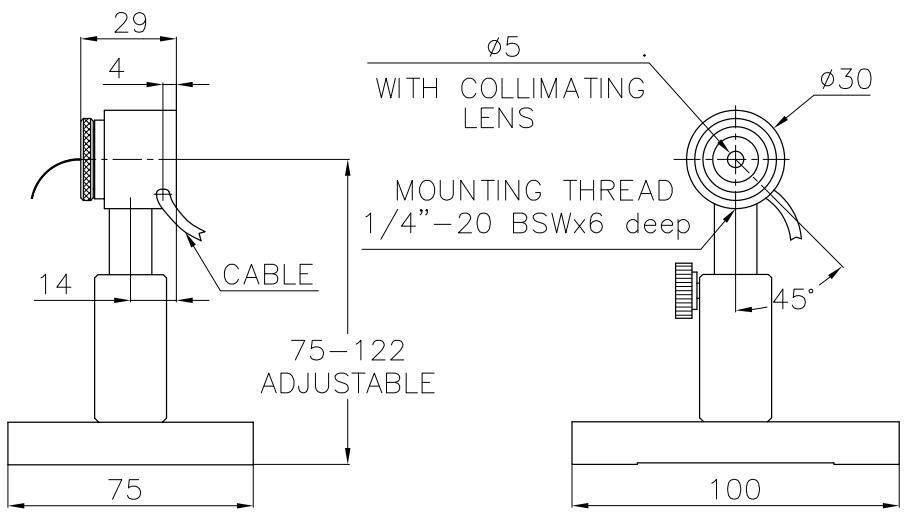Updated:2025-03-13
Views:1655
 WeChat
WeChat
 QQ
QQ
 Online Service
Online Service
The PD300-IRG is a sensitive photodiode laser measurement sensor for telecom applications. It can accept either fiber input or free space with 5mm aperture. It has a removable filter. Without filter, its spectral range is 800 - 1700nm and its power measuring range is 10pW - 800µW. With filter the spectral range is 950 - 1700nm and the power range is 20µW - 150mW. The sensor comes with a 1.5 meter cable for connecting to a meter or PC interface.

| Aperture | Ø5mm (max) |
| Spectral Range | 800-1700nm |
| Power Range | 10pW-200mW |
| Dimensions | Ø30 W x 29 D (mm) |
| Max Pulse Energy | 100μJ |
| Max Average Power Density | 5W/cm² |
| Response Time | 0.2s |
| Max Average Power | 200mW |
Measuring the average power of pulsed laser with photodiode
Background
When using photodiode detectors such as PD300 or IS6-D-VIS to measure the average power, the maximum power or saturation power is determined by the maximum photocurrent generated by the photodiode while maintaining linearity. The saturation power of bare silicon photodiode is usually 3mW. Increasing attenuation in the form of a filter or by using an integrating sphere will naturally increase the overall saturation power of the sensor.
Photodiode saturation in CW
When the photodiode is irradiated by CW laser, the generation rate of carriers (electrons and holes) is stable. The electric field inside the photodiode causes electrons and holes to drift in different directions to the anode and cathode, thus generating photocurrent measured by the display unit. A small part of these carriers will be recombined before leaving the photodiode, so it will not affect the measured photocurrent. When the photocurrent reaches about 1mA, the voltage on the load resistance of the display unit starts to match the potential between the separated photogenerated charges. The internal potential of the photodiode is not enough to push additional current through the circuit, and the photodiode response becomes saturated.
Saturated energy of other photodiode sensors
By measuring the saturated pulse energy of the basic photodiode, the saturated pulse energy of other photodiode power meters can be calculated by considering the different attenuation in each sensor. When using pulsed lasers, it is important to ensure that the average power and pulse energy do not exceed the maximum value.
Customer Service QQ
Customer Hotline:
Technical Supports